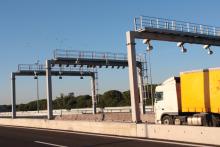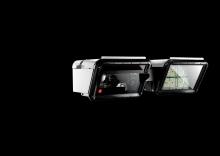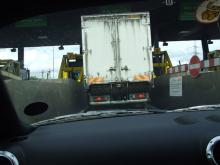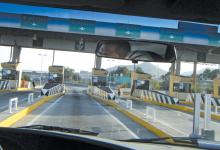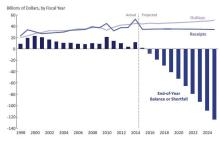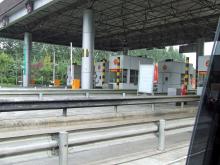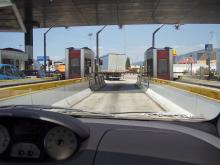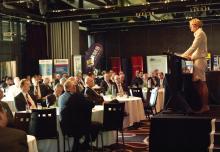Jon Masters reports on the latest moves in the free-flow tolling segment. Free-flow tolling of roads and discrete infrastructure, such as bridges and tunnels, is an area of transportation that appears to be booming. Tolling in general is on the up, often still as a means for funding road projects where public sector budgets can no longer cover the necessary costs, but not exclusively so. Several high profile examples of road user charging for ‘demand management’ – the reduction of congestion as part of a wi
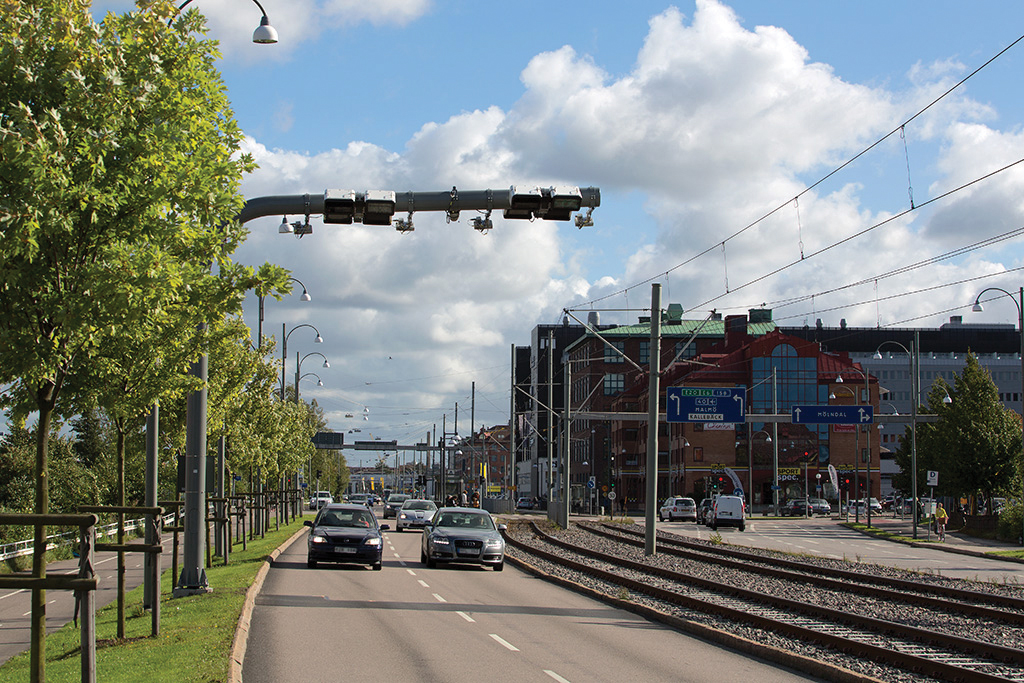
Sophisticated free flow tolling technology is used in the Swedish city of Gothenburg
Jon Masters reports on the latest moves in the free-flow tolling segment
Free-flow tolling of roads and discrete infrastructure, such as bridges and tunnels, is an area of transportation that appears to be booming. Tolling in general is on the up, often still as a means for funding road projects where public sector budgets can no longer cover the necessary costs, but not exclusively so. Several high profile examples of road user charging for ‘demand management’ – the reduction of congestion as part of a wider overall transportation policy – have been launched in recent months.These types of road pricing schemes in particular, including a raft of ‘managed lanes’ projects getting underway in the United States and the latest cordon-based city congestion charge launched in Gothenburg in January this year, rely on free-flow all-electronic tolling (AET) systems. Moreover, technological advances over recent years have made conversion to all-electronic tolling feasible for most highway authorities and operators. In Australia, for instance, where
Risk transferred
Australia is a country, like many, where it is now very unlikely that a major new road development will be built without tolls levied or a form of private sector concession established to fund the road’s construction, maintenance and operation. “This model is still typical, although all of the risk was placed on the private concession until the recent global financial crisis,” said Kapsch TrafficCom Australia managing director Soren Tellegen. “More recently, concessions have been constructed still as a public private partnership, but with revenue risk held by government. It is likely that this trend will have to continue at least in the short term to maintain private sector interest.”A picture of road charging growing as a means for managing demand for road space becomes clear if the many varieties of systems is considered. For urban road management at least, there is a concentration of access control and low emission zone schemes in operation in Europe. Worldwide the number is comfortably into three figures and the majority are electronically controlled, which highlights how widespread the technologies are. It also means there is a large peer group for municipalities to draw from for advice and experience, according to Kapsch’s solution manager for urban traffic Dietrich Leihs:“Municipalities are very keen to learn from each other, in part because of national legislative requirements,” Leihs said. “In Italy there are over 150 schemes, the first electronically enforceable one of which went into operation at the beginning of the millennium. Things have raced ahead in the last five years. The 2008 European Clean Air Directive has been a big driver of deployments and I can see carbon zones following the same trend.”
One part of a whole
While there have been numerous examples of a ‘no’ vote for urban charging, such as in Manchester, Edinburgh and New York, just as many have been publicly approved. Gothenburg is the latest city to launch a cordon-based congestion charge. As with the Swedish capital Stockholm before it, Sweden’s second largest city has instigated road charging as part of a “whole transportation system,” said“The single gantry system reduces the size and the cost of the solution considerably,” Furan said. “In legacy systems, a vehicle detector senses the presence of a vehicle, thereby triggering the data acquisition. In the single gantry system, the imaging system in the gantry automatically finds and tracks every vehicle through the entire area covered by the single gantry charging point. This eliminates the need for dedicated vehicle detectors and allows the system owner to better control where and under which conditions a charge shall be applied.”
Changing demand
Gothenburg’s congestion charge is intended to reduce traffic pollution, while raising revenue to fund public transportation, cycling facilities and other ‘green’ initiatives in the city. “The main motive here is changing demand from car to transit,” Furan said. “A modal shift of around 10% may be desirable in cities and 25% in rural areas, which raises the question of how much should the cost of rail fares be subsidised? Systems of tolling can allow politicians to do so. It provides funds for infrastructure and makes roads more tolerable. In Stockholm, the congestion charge launched in 2006 cut rush hour traffic by 30% and travel times by half.”Reducing congestion by managing demand and shifting more of a share of overall travel to public transportation are the motives behind the growing number of ‘managed lanes’ or HOT (high occupancy transit) lanes projects in the US. There are more than 10 of these schemes now operating, with another three soon to be launched and a further list of 12 under development.
Not all are the same, but each generally follows the principle of cordoning off existing or new lanes reserved for drivers willing to pay to use them. How much each motorist pays usually depends on how many people are travelling in the vehicle – solo drivers pay the most. In some cases, charges also rise with demand, measured by falling traffic speed, or with time of day. The aim is to maintain traffic flow, which is assisted further by the free-flow systems being fully electronic with no barriers to impede vehicles’ progress. Furthermore, in most cases the managed lanes are also reserved for buses.
“Folk that ride transit get the benefits without additional charge, so encouraging intermodality,” said Ken Philmus, a former director of the New York & New Jersey Port Authority and now senior vice president of
Meeting policy
“For years road tolling was just about raising money, but authorities have realised that they can apply the technology as a means for meeting policy,” Philmus added. “The aim is to have good transportation for the economy and for individuals’ quality of life. It is not just about travel times. With demand management pricing comes a way of adding capacity at a lower price than building from new and maximising use of that capacity to get as much throughput as possible. Cities and agencies are beginning to realise this.”The
“In the US the political standpoint of no tolling of existing infrastructure still prevails, but virtually all new capacity is being tolled because states cannot fund projects themselves,” said Schneider Electric’s director of electronic tolling solutions Darby Swank. “With dynamic pricing comes regulation of lanes’ use in an effort to guarantee the user free-flow to an end point in their journey.

